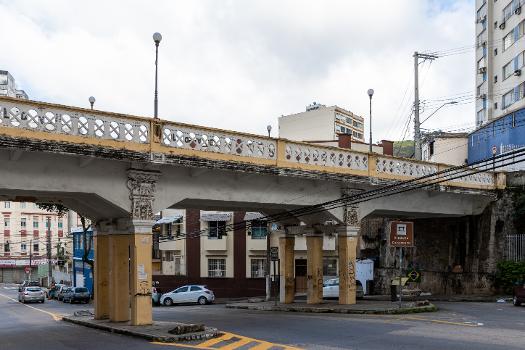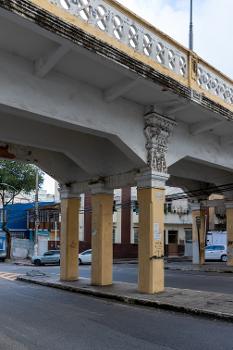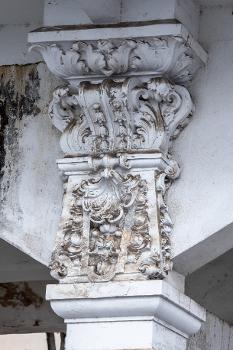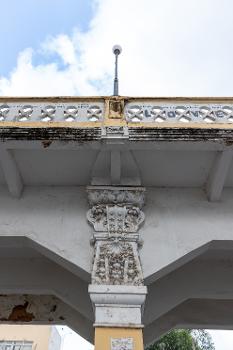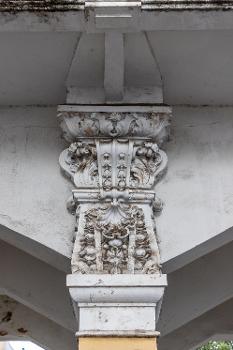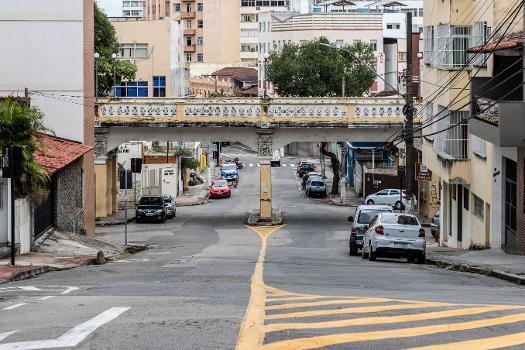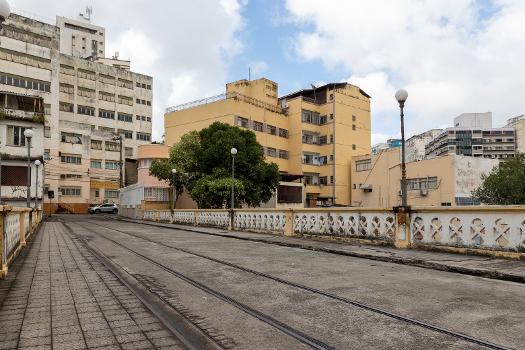General Information
| Name in local language: | Viaduto Caramuru |
|---|---|
| Completion: | 1925 |
| Status: | in use |
Project Type
| Function / usage: |
Road bridge |
|---|---|
| Material: |
Reinforced concrete bridge |
| Plan view: |
Structurae Plus/Pro - Subscribe Now! |
| Architectural style: |
Neoclassical |
| Structure: |
Haunched girder bridge Triple T-section girder bridge |
| Material: |
Structurae Plus/Pro - Subscribe Now! |
| Secondary structure(s): |
Structurae Plus/Pro - Subscribe Now! |
Location
| Location: |
Vitória, Espirito Santo, Brazil |
|---|---|
| Coordinates: | 20° 19' 10.65" S 40° 20' 22.21" W |
Technical Information
Dimensions
| total length | 34 m | |
| number of spans | 4 | |
| piers | number | 3 |
Materials
| piers |
reinforced concrete
|
|---|---|
| girders |
reinforced concrete
|
Notes
Excerpt from Wikipedia
The Caramuru Viaduct (Portuguese: Viaduto Caramuru) is a viaduct located in the Cidade Alta neighborhood in Vitória, Espírito Santo, Brazil. It has two spans and is 34 metres (112 ft) in length. The viaduct was inaugurated in 1925, enlarged in 1930, and is designated a heritage site by the Municipal Prefecture of Vitória. It is one of numerous neoclassical structures in the historic center of the city.
History
The Caramuru Viaduct sits on a slope below the Franciscan Convent of Espírito Santo. Once one of the most important Franciscan structures in Brazil, only ist frontispiece remains. The viaduct sits at the site of a battle in 1640 between the Portuguese and Dutch to expel the latter from Vitoria, and part of the larger military operation to end the Dutch colony in Brazil.
The tram was the primary means of transportation in Vitória in the early 20th century. The Caramuru Viaduct was built in 1925 under the administration of Florentino Avidos to connects Rua Dom Fernando and Rua Francisco Araújo via tram above Rua Caramuru. The idea was abandoned due to doubts about the ability of the viaduct to support trams and the lack of access curves. A tramway system never ran on the viaduct. Like most buildings and public squares in Vitória, the viaduct was built in the neoclassical style.
The viaduct was named as a tribute to the "Caramurus", or members of the Brotherhood of Saint Benedict of the Convent of Saint Francis. The brotherhood disbanded in the early 20th century. The name caused a conflict as another brotherhood dedicated to Saint Benedict existed at the Church of the Rosário; they were known as the "Peroás".
Public works in the 1930s resulted in the widening of streets and the viaduct. A set of colonial-period homes near the Igreja de São Gonçalo were demolished to complete the works.
Protected status
The Caramuru Viaduct is a designated heritage site by the Municipal Prefecture of Vitoria.
Text imported from Wikipedia article "Caramuru Viaduct" and modified on June 16, 2022 according to the CC-BY-SA 4.0 International license.
Participants
Currently there is no information available about persons or companies having participated in this project.
Relevant Web Sites
- About this
data sheet - Structure-ID
20083120 - Published on:
14/06/2022 - Last updated on:
15/06/2022

